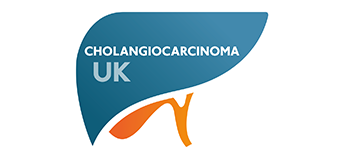Comment on transplantation in the UK
The Mayo Clinic in the USA is performing liver transplantation for cholangiocarcinoma – an aggressive protocol that they say is exhibiting dramatic increases in survival rates and offers new hope for patients with cholangiocarcinoma.
They also say they are the only medical center doing living donor liver transplantation as a treatment protocol for cholangiocarcinoma. In such a procedure, a healthy person donates half or slightly more of his or her liver to a family member or close friend who otherwise would be on a waiting list. Living donor liver transplants are performed because of the increased number of patients on the liver transplant waiting list and the shortage of available organs. An advantage for both the donor and recipient is that the surgeries can be performed at optimal times for both patients – and before the recipient becomes too ill to withstand the transplant surgery itself .
Transplantation is under constant review here in the UK, but still not done.
The following is a comment from Dr Shahid Khan of Imperial College London,
“I’m currently leading a revision of the UK guidelines on cholangiocarcinoma. Historically liver transplantation for cholangiocarcinoma was associated with rapid recurrence of disease and death within 3 years and hence not deemed an appropriate use of sparse donor organs. A 5-year survival of at least 70% is required for an indication. Survival rates after transplanting cholangios were poor: around 10% to 20%. Recently, the Mayo has reported 5-year survivals of up to 80% in very carefully selected patients undergoing pre-transplant chemotherapy and radiotherapy. However, this applied to only a minority of cholangio patients and most of the data so far is from that single centre. A few transplants have been done elsewhere recently, but cholangio remains a contraindication for liver transplantation in most transplant centres worldwide, until further studies at independent transplant centres confirm these encouraging results.
There is much debate/excitement about living donor transplantation. It was pioneered in the Far East, where it was initially done for children where a parent donated part of their liver. The risk of death to the donor is estimated at up to 0.5 % however, which may be unacceptable for society at large and is much higher than for living donor kidney transplantation. A single death in the US a few years ago stopped the entire US programme for a while. Nevertheless, the hope is that as centres get more experienced in doing this, the complication rate will fall and hopefully living donor liver transplantation may become an accepted treatment in our lifetime.”
We have also had comments in from our contacts at King’s College Hospital, which is a world renowned liver centre:
“There are concerns re recurrence rate which, coupled with the necessary immunosuppressant drugs, can shorten life expectancy – to say nothing of donor shortage – and with current survival rates it is considered there is an ethical dilemma re living related.
There is some exciting work being done re predictors/diagnostics with some small size studies re genetic/chromosomal markers that MAY predict this disease in which case early diagnosis may change the current thinking re transplantation.
For peripheral tumours, if caught early, transplantation is theoretically possible – however those people would also be amenable to potentially curative resection – which carries a lower risk rate and therefore would be the preferable treatment. “
So it would seem that whilst transplantation is being carried out in the USA and in Norway (where there is compulsory organ donation and a surfeit of donors), here in the UK long-term results are awaited. British centres are reserving judgement on this as a treatment for cholangiocarcinoma – and, of course, there is currently an enormous number of people needing liver transplants each year for a variety of other reasons and there are so few donors.







